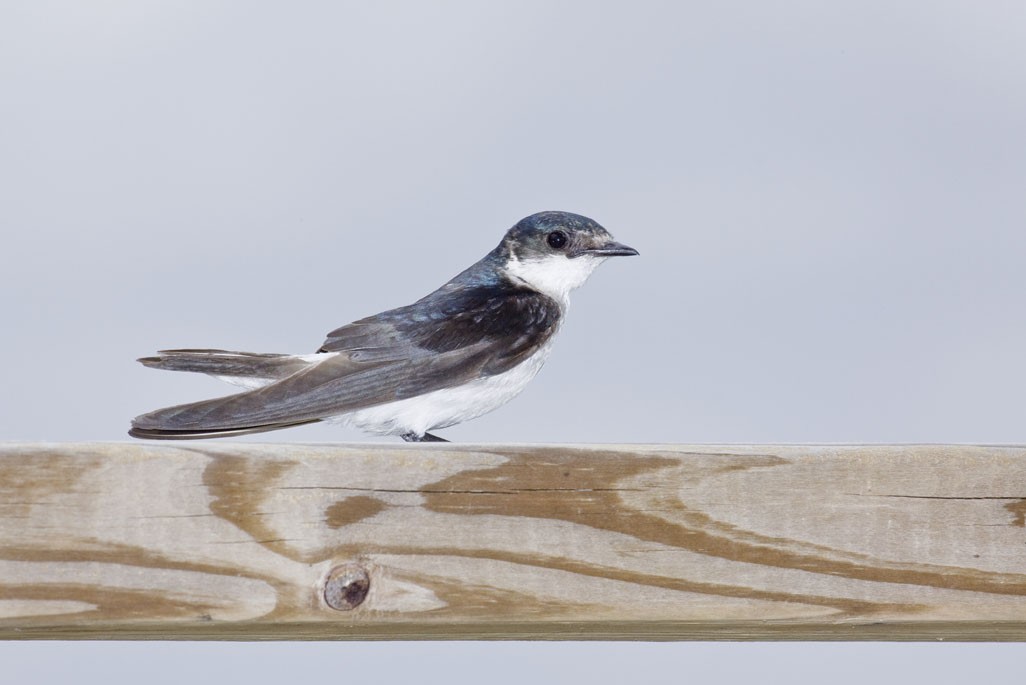Mangrove Swallow
A species of Typical American Swallows Scientific name : Tachycineta albilinea Genus : Typical American Swallows
Mangrove Swallow, A species of Typical American Swallows
Botanical name: Tachycineta albilinea
Genus: Typical American Swallows
Content
Description General Info
Description
A relatively small swallow, the mangrove swallow is 11–12 centimetres (4.3–4.7 in) long and weighs about 14 grams (0.5 oz). The adult has iridescent blue-green upperparts, white underparts, rump, and undertail- and wing-coverts, and blackish tail and flight feathers. The feathers are greener when fresh and bluer when worn. The white underparts sometimes have faint, dark shaft streaks. The bill is small and black, about 11 millimetres (0.43 in) long. The iris is a dark brown, and the tarsus and toes range in colour from black to fuscous-brown. The lores are black and have a thin white line above them. Two other species of Tachycineta have this distinctive feature: the violet-green swallow and the white-rumped swallow. The adult's tail is only slightly forked. The sexes are similar, although they differ slightly in size. Compared to the male, the female has a slightly longer tail and slightly shorter wings. The juvenile is dull grey-brown above and grey-brown washed white below. Occasionally, the juvenile's upperparts have a subtle, greenish gloss. The call of the mangrove swallow is a rolled "jeerrrt", or a "chriet". The song is frequently described as a soft trilling. It uses a short sharp alarm note. 
Size
12 cm
Colors
Black
Gray
White
Blue
Nest Placement
Cavity
Feeding Habits
Mangrove Swallow, primarily insectivorous, consumes various flying insects. It exhibits aerial foraging techniques, catching prey mid-flight. Distinguished by its agility and preference for insect-rich wetlands.
Habitat
The mangrove Swallow predominantly inhabits lush, waterside ecosystems such as mangrove forests, which are a staple to its dwelling habits. Additionally, these birds are often found skimming over the surfaces of freshwater lakes, ponds, and rivers. Beyond aquatic habitats, mangrove Swallow are also observed in open areas like pastures, coastal beaches, and meadows, as well as marshes, which provide them with ample foraging opportunities across a broad range of lowland and coastal regions.
Dite type
Insectivorous
General Info
Feeding Habits
Bird food type
Bird Feeder Type

Platform

Small Hopper
Behavior
The mangrove swallow is closely associated with fairly still, open water, and is often found in small flocks over rivers or lakes when not breeding. Its flight path is normally direct and low over water. It flies with quick wingbeats and some gliding. In between foraging attempts, it can frequently be seen to perch. 
Distribution Area
This swallow is native to Mexico and all of Central America (Belize, Guatemala, Honduras, El Salvador, Nicaragua, Costa Rica and Panama). It is usually found near low-lying bodies of water and mangrove forests, which gave rise to the common name. It has also been recorded in intertidal zones. In Mexico, it is not typically found above 600 metres (2,000 ft). In Costa Rica, it has been found to occur as high as 1,000 metres (3,300 ft), but it normally occurs between 500 metres (1,600 ft) and sea level. It is rarely found in the highlands. The mangrove swallow is also vagrant to the United States, where it was first recorded in 2002, in Florida. Although the mangrove swallow is a full-time resident of its range, there are probably some post-breeding movements. 
Species Status
Not globally threatened.
